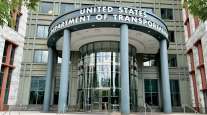Senior Reporter
California Air Quality Regulators Target Nitrogen Oxide Emissions Reduction
State air quality regulators in California said proposed Phase 2 standards for reducing greenhouse-gas emissions and increasing fuel efficiency for medium- and heavy-duty trucks do not go far enough.
At a public hearing Aug. 18 in Long Beach, they called for reducing the existing standard on nitrogen oxide emissions from medium- and heavy-duty trucks to near-zero levels as part of the pending proposal.
However, Timothy Blubaugh, representing the Truck and Engine Manufacturers Associatoin, told representatives of the U.S. Environmental Protection Agency and the National Highway Traffic Safety Administration, “It is essential that the final rule recognizes the commercial needs of the marketplace, the complexity of product offerings and avoids unintended consequences.”
Blubaugh said the rule, among other things, must provide adequate lead time, and account for impacts of trailer design on truck aerodynamics.
But state regulators said more stringent and faster action is needed to help California, especially, comply with fast-approaching requirements of the Clean Air Act.
Mary Nichols, chairwoman of the California Air Resources Board, said at the hearing an earlier implementation date of the proposal “would allow for more timely options to pursue a mandatory lower nitrogen oxide engine standard nationally.”
She said reducing NOx is “absolutely critical” if California is to meet its federal ozone attainment obligations. She said trucks are responsible for one-third of the state’s NOx emissions.
Gary Larson, representing the South Coast Air Quality District, said the greater Los Angeles area must reduce NOx emissions by more than 50% “beyond all federal, state and local regulations” within the next seven or eight years to meet air quality standards set to take effect then.
Larson asked EPA to issue a parallel rulemaking to accompany its eventual GHG rule to lower NOx standards to 0.02 grams per brakehorse power levels. The current level for NOx emissions established in 2010 is 0.2g/hp-hr.
In addition, Nichols said the federal GHG proposal is not stringent enough to drive development of needed advanced technologies, and incentives for their purchase that were included in the EPA’s Phase 1 program had been eliminated in the latest proposal.
Without significant reliance advanced technologies built into the standard, Nichols said, the projected increases in truck activity will “completely overtake” then projected GHG reductions by 2043.
She said deployment of low and zero emissions and other advanced technologies, such as fuel cells, hybrids and electric vehicles, "is the foundation of California’s pathway to achieving our climate and air quality goals" and “we feel it should be part of the national strategy to meet GHG targets.”
The hearing was the second, and final, one before EPA and NHTSA close the comment period Sept. 17. Written comments are due by that date.
The agencies held an initial meeting Aug. 6 in Chicago, and final action on the rules proposed this June is expected next spring.
Tom Fulks, representing the Diesel Technology Forum, based in Frederick, Maryland, said 120,429 model year 2010-2014 “clean diesel” Classes 3-8 trucks are operating in California.
They have eliminated 120,000 tons of NOx and 580,000 tons of carbon dioxide and saved 1.4 billion barrels of crude oil between 2010 and 2014, he said, based on DTF’s most recent research.
DTF is a nonprofit organization that raises awareness of the importance of diesel engines, fuel and technology.




